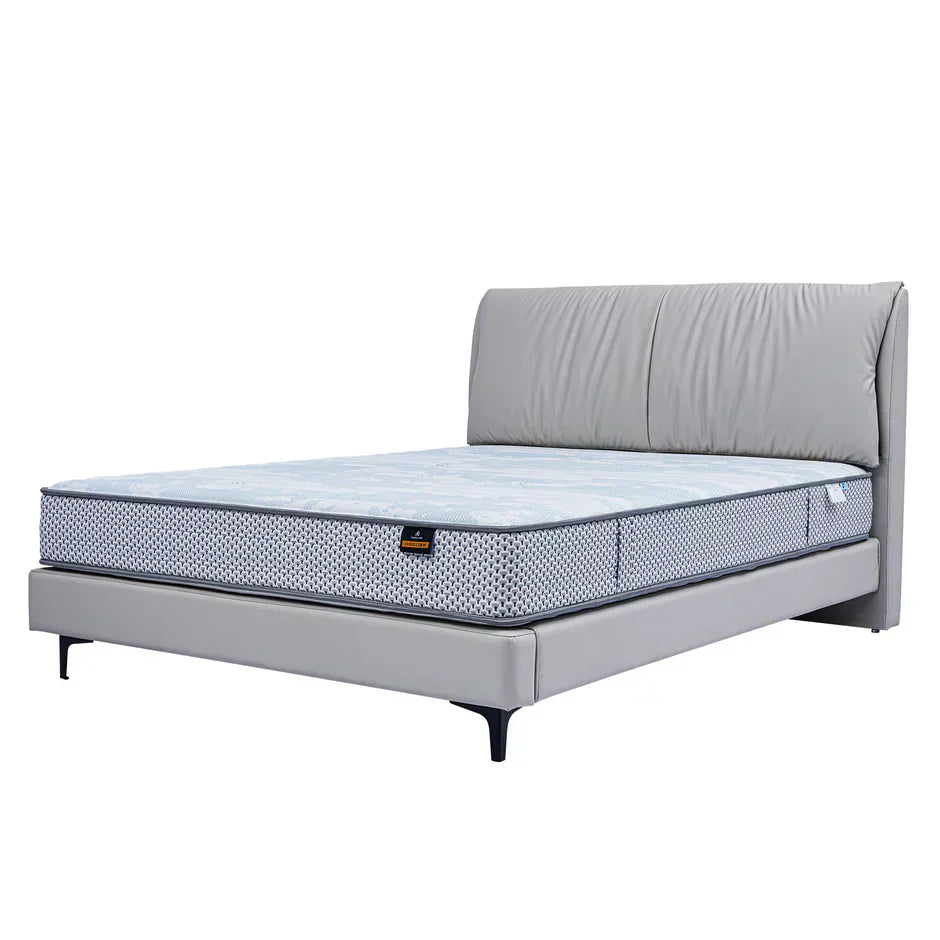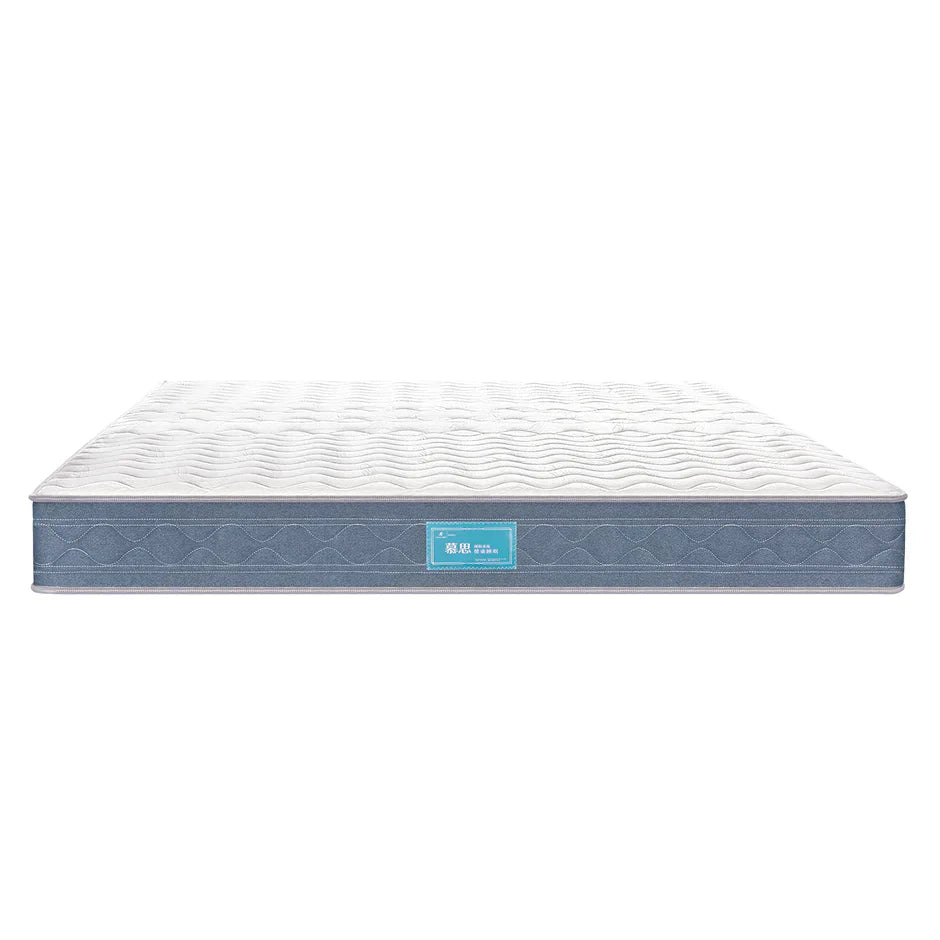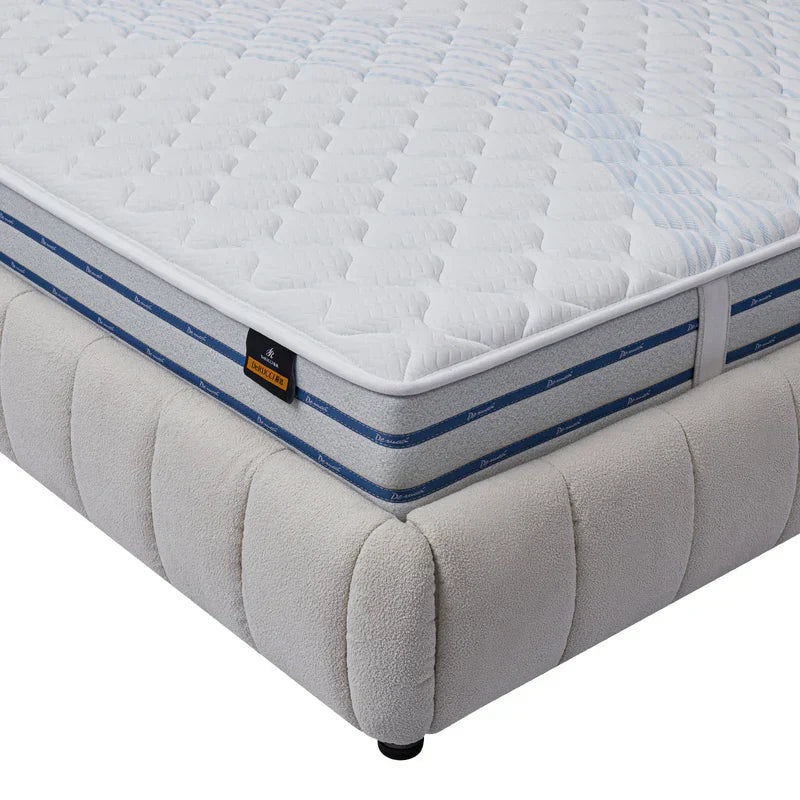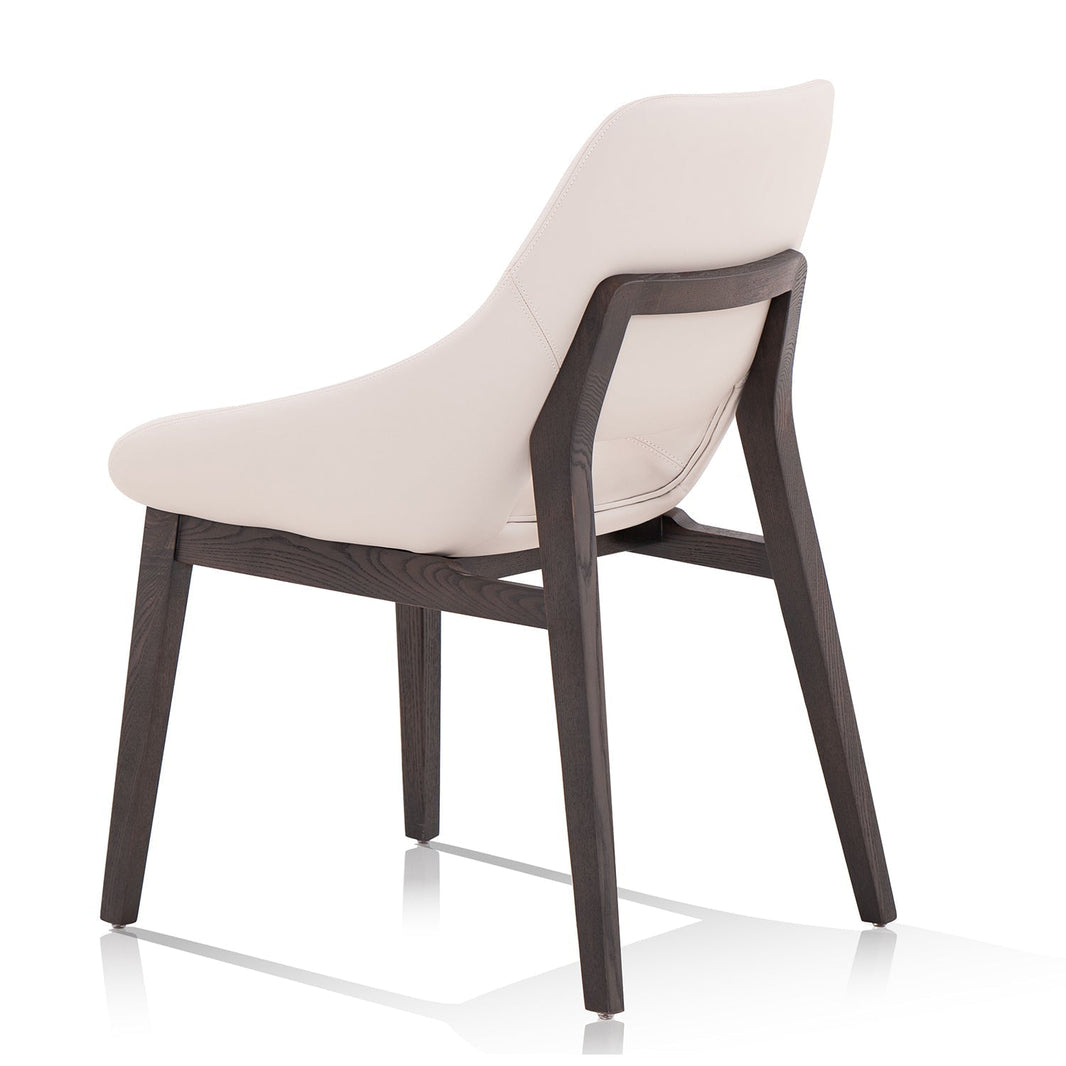The perfect mattress for your kid may not be as complex as it probably sounds. After all, you may simply need to ensure there is someplace soft where they can lay their head at night, protect them, and contribute to their development. You want a mattress that will suit their age and won't cause allergies but could resist sleep and jumping jack contests or pillow forts. The following are steps you can take to choose a bed that will grow with your kids, keep the sneezes at bay, and be steadfast through all the bedtime stories for years to come.
Why Your Child’s Mattress Matters
Healthy Growth During Sleep
Much like a healthy diet, a good mattress is extremely important for your child's growth. A good mattress provides proper support to your child while sleeping to ensure they don't wake up in pain but are full of vitality. This support is very important, not only for comfort but also to keep proper alignment of their still-growing spines, ensuring that their muscles fully relax to develop strong and healthy with every passing night.

Safety Comes First in Bed Too
While putting a helmet on them will help keep them safe while biking, acquiring a safe mattress will keep them protected even in their sleep. In that case, you would like to be sleeping on a mattress that allows for good cooling to prevent overheating and one that does not emit toxic fumes from the different chemical compositions used in the making. It should also provide protection for your child against dust mites and other allergens that would interfere with his or her sleeping pattern.
Snooze Patterns and Standing Tall
Your child needs restful sleep in order to face each new day. A lousy mattress ensures unrestful nights and tired, cranky mornings. Consistent, quality sleep plays a part in their long-term posture and the way that they carry themselves. You are effectively investing in endless nights of sound sleep and bright, energetic mornings for your child by selecting the right mattress, helping them to live a healthy lifestyle.
Finding the Sweet Spot: The Right Mattress Firmness for Kids
Snug as a Bug: Infants and Toddlers
- Go for Goldilocks Firm: Pick a mattress firm enough to support your little one safely, but with a touch of comfort for a peaceful slumber.
- Safety Seal of Approval: Always choose a mattress that adheres to safety guidelines to ensure it's suitable for infants - this helps prevent suffocation hazards and reduces the risk of SIDS.
Big Kid Beds: Ages 4-12
- Just-right Support: Aim for a medium-firm mattress to cushion their dreams while keeping their growing bodies properly supported.
- Growth Spurt Ready: Kids shoot up quickly! Look for a durable mattress that can hold up against jumping, fort-building, and yes, more growth spurts.
- Spill-friendly Options: Accidents happen; consider a mattress with a washable cover or one that's water-resistant for easy clean-up.
Teen Dream: Ages 13 and Older
- Custom Comfort: Let your teen have a say—some might like it plush, while others may prefer firm. It's all about what helps them rest best.
- Solid Base, Cozy Top: Even if they go for a softer feel, make sure there's a good support system at the mattress core to encourage healthy posture.
- Size Matters: Teens may need more room to stretch out. If space allows, consider upgrading to a larger size for added comfort.
Bed Sizes that Grow with Your Child
When selecting a mattress for your child, size is an essential factor to consider. It's important to think about not just their current size and age but also how they will grow in the upcoming years. The right mattress should accommodate their growth spurts, ensuring comfort, safety, and suitability over time. Here's a quick guide to help you visualize the best mattress sizes for different stages of your child's growth:
|
Age Group |
Height Range |
Dimensions |
Notes |
|
Infants & Toddlers |
Up to 3 feet |
About 27" x 51" |
Perfect snug fit for cribs; convertible option |
|
School-Age (4-12) |
3 to 4.5 feet |
Approximately 60" x 70" |
Ideal for small rooms; ample space for growth |
|
Approximately 60" x 80" |
Extra length for taller kids; good for small rooms |
||
|
Teens (13+) |
4.5 feet and above |
Approximately 60" x 80" |
Suits growing bodies; can last into late teen years |
|
Over 6 feet |
Approximately 72" x 80" |
Provides more room for taller teens; longer-term use |
Choosing the right mattress size is key to ensuring that your child sleeps comfortably through the night during every stage of their growth. The table above offers a straightforward reference to aid in making an informed decision that aligns with your child’s needs. Always remember to balance the mattress size with the available room space, and consider future-proofing the purchase by opting for a size that your child won't outgrow too soon.
Choosing a Child-Friendly Mattress: Allergies, Temperature, and Durability
Allergy Considerations for Sensitive Sleepers
Children with allergies require special consideration when it comes to choosing a mattress. Materials that resist common allergens such as dust mites, pet dander, and mold can significantly improve sleep quality and health.
- Hypoallergenic Materials: Look for mattresses labeled as hypoallergenic, which are designed to reduce the possibility of an allergic reaction.
- Easy-to-Clean Surfaces: Mattresses with washable covers or those that can be easily wiped down can help reduce the buildup of allergens over time.
- Certified Safe: Look for mattresses that have passed VOC (Volatile Organic Compound) harmful substances tests and boast certifications like ISO 14001 for environmental standards and OEKO-TEX® STANDARD 100, ensuring they're free from harmful chemicals.
How to Pick a Cool Mattress for Kids
A comfortable sleeping temperature is crucial to ensure your child gets restful sleep through the night. Mattresses that offer good temperature regulation can prevent overheating and reduce waking up due to discomfort.
- Breathable Fabrics: A mattress topped with breathable fabrics like mesh can allow for better air circulation and help maintain a neutral sleeping temperature.
- Gel Infusions: Some mattresses come with gel memory foams that draw heat away from the body, offering a cooler sleeping surface.
- Innovative Technologies: Other advanced technologies like space resin balls can also be found in some children's mattresses to help regulate temperature dynamically throughout the night.
Choosing a Durable Mattress for Your Child
A mattress for a child must not only be comfortable and allergy-friendly but also durable enough to support their growth and daily activities over several years.
- Weight Capacity: Ensure the mattress can support your child’s weight as they grow. For instance, if the mattress has a weight capacity of 150 pounds, it will support most children well into their teens.
- High-Density Foams: Mattresses with high-density foams tend to keep their shape longer and withstand regular use.
- Quality Springs: If you opt for an innerspring mattress, look for one with quality independent pocket springs that can provide consistent support over time.

When shopping for your child’s mattress, take into account these considerations beyond comfort alone. The right choice will accommodate potential allergies, provide a cool and comfortable environment for sleep, and stand up to wear and tear as your child grows.
Are Latex Mattresses Good for Kids?
Yes, latex mattresses are good for kids. They are hypoallergenic; this is great for children with allergies since they tend to repel common allergens like dust mites and mold. Their natural composition provides excellent breathability, minimizing overheating during the night, which is a top concern for young sleepers.
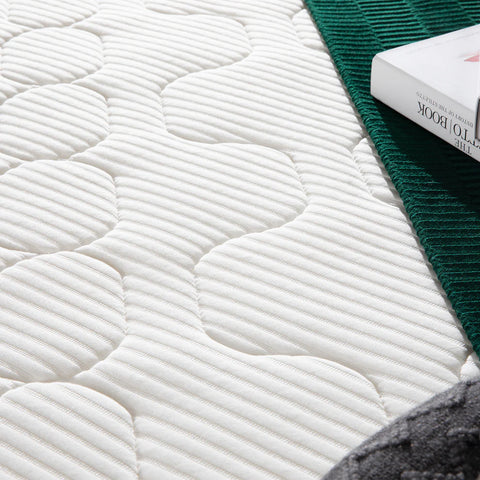
Is Memory Foam or Coil Mattress Better for Kids?
Memory foam mattresses have their own unique advantages for the little ones. Owing to this form-conforming propensity, they should help the sleepers in lessening discomfort from growth pains, providing variegated pressure relief. Similarly, if your child tends to toss and turn or shares a bed with siblings, memory foam's motion isolation means his movement doesn't disturb the whole mattress.
On the other hand, coil mattresses are exceptionally good at temperature regulation skills that are of utmost importance for kids who sleep hot. The inner air circulation in a coil mattress keeps the air moving better and enables heat to dissipate, which keeps the sleeping environment cooler. And if your child likes to lie on a firmer base, coils can give them that supportive feeling with just the right amount of bounce kids sometimes love.
For the child who cherishes coziness and moves a lot, go for a coil mattress—it keeps them cool and has bounce. If they need to ease aches from growing or stay put while sleeping, memory foam is better—it's soft and reduces movement across the bed.
Picking the Perfect Mattress for Your Kids
When you're picking out your child's next mattress, think about what makes them most comfortable. Is it a bed that keeps them feeling cool? One that doesn't make their allergies act up? Or maybe it's something super sturdy for all their jumping and playing. You've got the know-how now to find a great mattress that'll give them sweet dreams and help them wake up bright and bouncy. Have a chat with your kid, take a good look at the options, and enjoy choosing a bed they'll love night after night.




